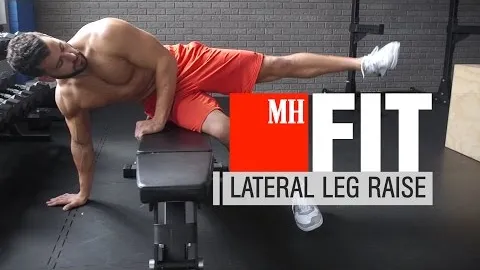Introduction to Lateral Leg Raise Exercise
Lateral leg raise is a highly effective exercise that targets the outer thighs, commonly known as the abductor muscles. It is a simple yet powerful movement that can be performed by individuals of all fitness levels. This exercise helps to tone and strengthen the abductors, enhances balance, and improves overall lower body stability. In this article, we will delve deeper into the benefits of lateral leg raise, how to perform this exercise correctly, and variations that can be incorporated to challenge your muscles even further.
Benefits of Lateral Leg Raise Exercise
- Strengthening the Abductor Muscles: Lateral leg raise specifically targets the abductor muscles, including the gluteus medius and minimus. These muscles play a vital role in stabilizing the pelvis and hips during movements such as walking, running, or even standing. Strengthening these muscles can enhance overall lower body stability and reduce the risk of injuries.
- Toning and Shaping the Thighs: Lateral leg raise helps to tone and shape the outer thighs, giving them a more defined and sculpted appearance. This exercise engages the abductors and helps to reduce excess fat and cellulite in the thigh area.
- Improving Balance and Coordination: Performing lateral leg raise requires maintaining proper body alignment and balance. Regularly practicing this exercise can help improve your balance and coordination, making daily activities easier and reducing the risk of falls.
- Preventing Knee and Hip Injuries: Weak abductor muscles can contribute to poor alignment of the knees and hips, increasing the risk of injuries such as knee pain, iliotibial band syndrome, and hip instability. Lateral leg raise strengthens these muscles and helps to prevent such injuries.
- Enhancing Athletic Performance: Strong abductor muscles are essential for athletes participating in sports that involve lateral movements, such as soccer, basketball, or tennis. Lateral leg raise can improve your overall athletic performance by enhancing the power and stability of these muscles.
How to Perform Lateral Leg Raise Exercise
To perform the lateral leg raise exercise correctly, follow these steps:
- Starting Position: Begin by lying on your side on an exercise mat. Place your lower forearm on the mat for support and align your body in a straight line, with your legs extended and stacked on top of each other. You can also bend your bottom leg slightly for additional stability.
- Engage Your Core: Activate your core muscles by drawing your belly button towards your spine. This will provide a stable and strong foundation for the exercise.
- Raise Your Top Leg: Inhale and slowly lift your top leg towards the ceiling. Keep your foot flexed and your leg straight as you lift. Exhale as you raise your leg.
- Controlled Movement: Lift your leg until you feel a contraction in your outer thigh muscles, then pause for a second before slowly lowering it back to the starting position. Avoid any jerky or swinging movements, and focus on controlled and smooth motions.
- Repeat: Complete the desired number of repetitions on one side before switching to the other side. Aim for 10-15 repetitions per side, or as recommended by your fitness level and goals.
- Progression: As you become more comfortable with the exercise, you can add variations such as adding ankle weights or using resistance bands to increase the challenge to your abductor muscles.
Tips and Considerations
To perform lateral leg raise exercise safely and effectively, keep the following tips and considerations in mind:
- Proper Alignment: Maintain proper body alignment throughout the exercise. Your body should form a straight line from head to toe.
- Avoid Overarching: Be cautious not to arch your back excessively during the movement. Engage your core muscles to stabilize your spine.
- Breathing: Inhale as you lower your leg and exhale as you lift, focusing on controlled breathing throughout the exercise.
- Start with a Comfortable Height: Begin with a comfortable range of motion, gradually increasing the height of your leg lift as your muscles become stronger and more flexible.
- Listen to Your Body: If you experience any pain or discomfort, modify the exercise or consult a fitness professional for guidance. It's essential to listen to your body and work within your abilities.
- Warm-Up and Cool-down: Prior to performing any exercise, ensure you warm up your muscles with dynamic stretches or light cardio. After completing the exercise, cool down with static stretches to aid muscle recovery and flexibility.
Conclusion
Lateral leg raise is a highly effective exercise for strengthening and toning the abductor muscles, improving balance and coordination, and preventing lower body injuries. By incorporating this exercise into your fitness routine, you can enhance your lower body stability, achieve sculpted thighs, and optimize your athletic performance. Remember to perform lateral leg raise with proper form and gradually increase the difficulty level as your muscles adapt. Always prioritize safety and consult a fitness professional if needed. Start reaping the benefits of lateral leg raise and feel the difference in your lower body strength and stability!
